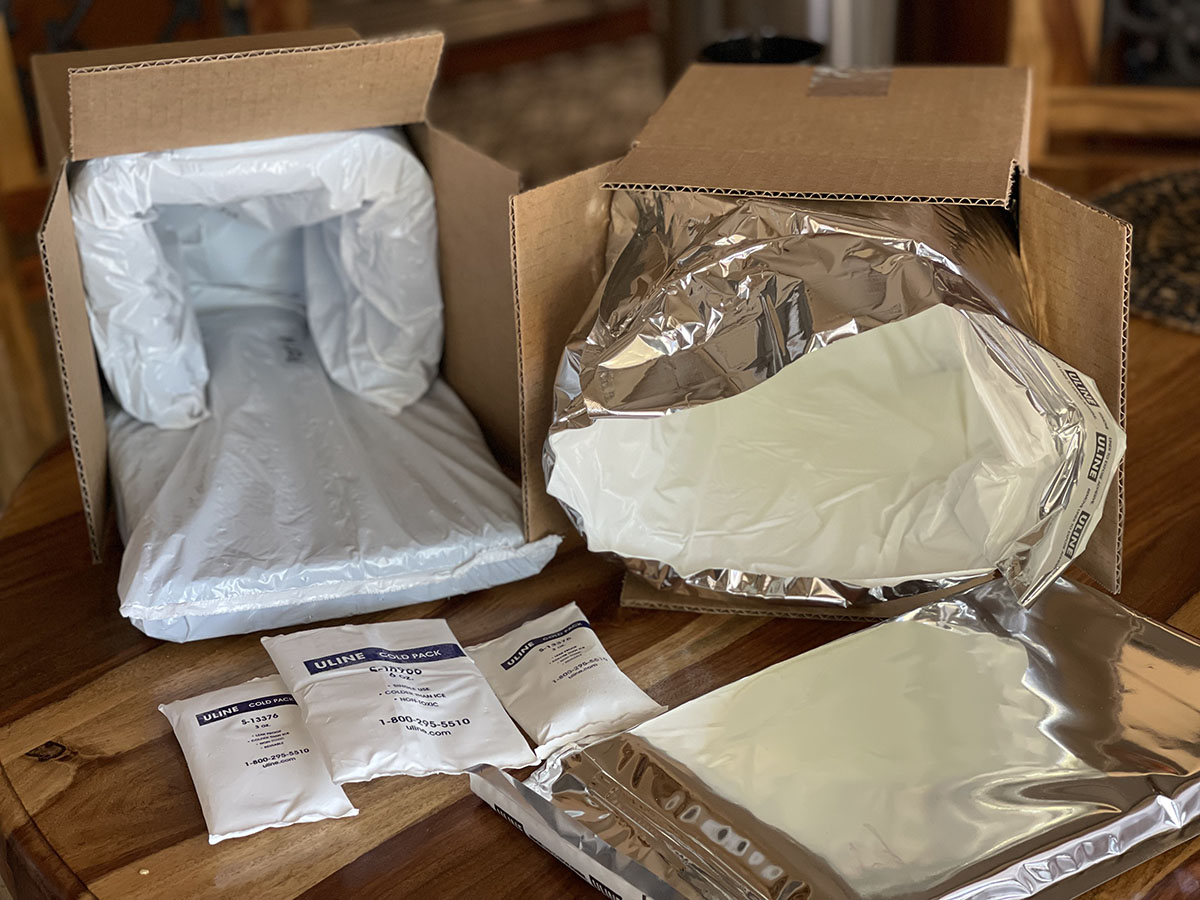Easy Skyr Yogurt Starter
Introduction
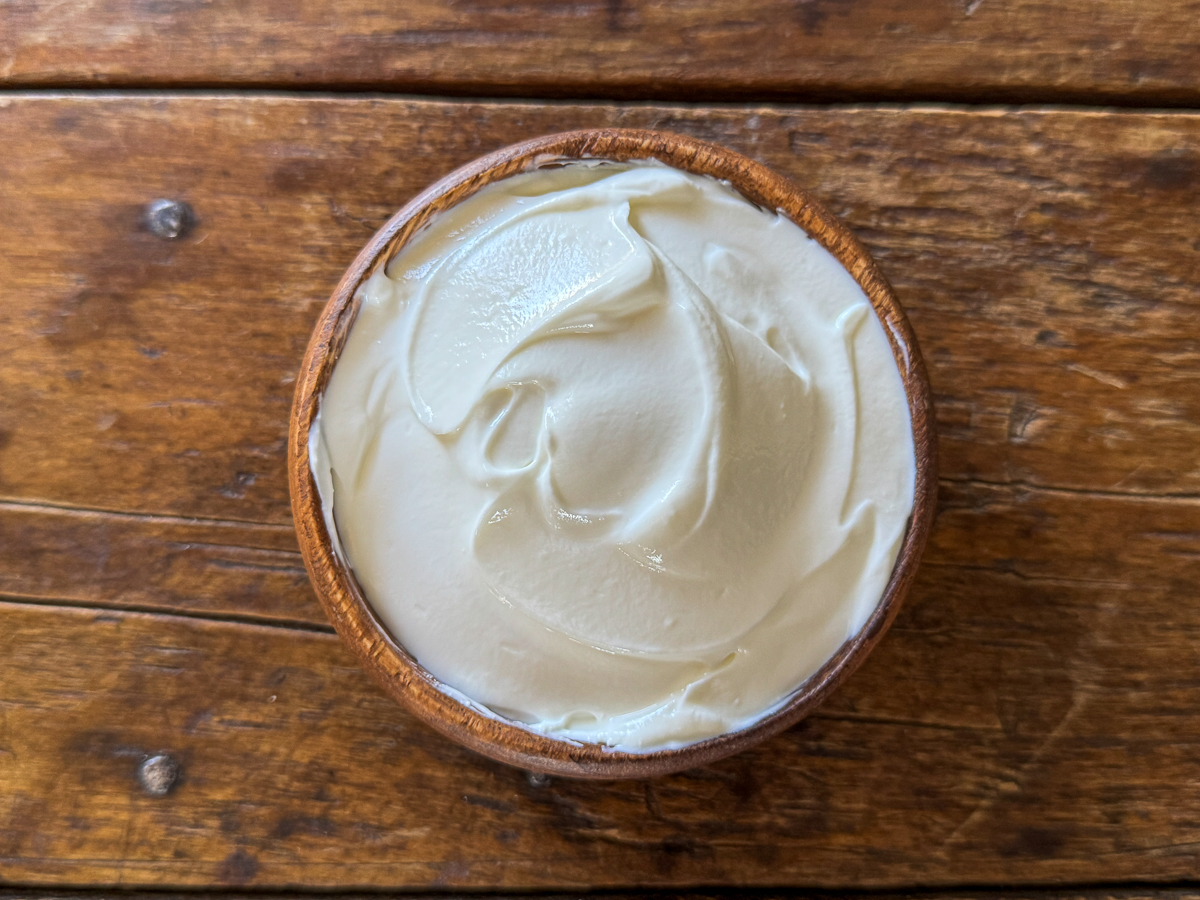 Skyr: An Heirloom of Icelandic Tradition
Skyr: An Heirloom of Icelandic Tradition
Skyr is a treasured, cultured dairy food that has been part of Icelandic life for over a thousand years. Handed down through generations, it's crafted with heirloom cultures and a unique straining process that yields a thick, creamy texture and naturally higher protein content.
Although it’s technically a soft cheese, skyr is enjoyed like yogurt—often topped with fresh berries, a swirl of jam, or even a spoonful of honey. It’s mild in flavor, rich in nutrients, and deeply satisfying.
✨ A Look into Icelandic Culture & Skyr:
Historical Significance:
Skyr has long been a cornerstone of the Icelandic diet. In a land with short growing seasons and long winters, skyr was a reliable and nourishing food that supported entire communities. Its staying power tells the story of a food that is not only delicious but essential.
🥛 Skyr vs. Yogurt – What’s the Difference?
While skyr and yogurt may look similar, their makeup is a little different:
- Protein Power: Skyr typically contains more protein per serving than regular yogurt, making it a favorite among those seeking to support muscle growth, metabolism, and satiety.
- Texture & Taste: Skyr is much thicker—almost like Greek yogurt—but with a smoother, less tangy flavor.
- Culturing Process: It’s made with specific heirloom cultures that give skyr its characteristic consistency and health benefits.
- Technically Cheese: Yes! Skyr is classified as a fresh cheese due to its production method, but it is consumed similarly to yogurt.
Strains in Skyr Yogurt
Purchase
United States:
If you live in the USA, you can order directly from my store. I keep these cultures refrigerated to ensure that they stay alive & fresh while they are waiting for you to adopt them.
Purchase from my store Get the support you need!
Refrigeration is always recommended! These cultures will last 24 months in the fridge, even longer in the freezer, but only a few weeks at room temperature.
Instructions
Easy Skyr Yogurt
Watch The Video
Equipment
- Insulated Mug (30 ounces). Must be good quality stainless steel.
You can also use a Yogurt Maker, Sous Vide, or similar device. - Kefirko Yogurt and Cheese Strainer or cheese cloth, or ultra-fine mesh strainer (optional)
Ingredients
- 1 quart Milk - ultra-pasteurized dairy cow milk (skim, 2%, or whole)
- 1 sachet Easy Skyr Yogurt Starter - or ¼ cup of Easy Skyr Yogurt (from previous batch)
Every ingredient with a link was selected by me to make it easier for you. I may receive a small affiliate commission if you buy something through my links. Thank you! ❤️
Instructions
 Insulated Mug Instructions
Insulated Mug Instructions
- WARM: If using ultra-pasteurized milk, gently heat milk to 110°F — boiling is not necessary. If using milk that has not been ultra-pasteurized, slowly heat the milk to 212°F (100°C), stirring frequently to prevent scorching. Once heated, remove from heat and allow it to cool to 110°F (43°C) before proceeding.
- MIX: Pour into the insulated mug and gently stir in 1 sachet Easy Skyr Yogurt Starter (or ¼ cup of Easy Skyr Yogurt from a previous batch) until dissolved.
- INCUBATE: Close the lid, wrap with a towel, blanket, or similar insulation on all sides, including top and bottom. Place in an insulated cooler. If the room temperature is 75°F or above, it is usually fine without the cooler. Incubate for 8-10 hours or up to 24 hours until the texture has thickened.
- STORE: When the yogurt has thickened and has a pleasant tangy flavor, your yogurt is ready. Secure the lid and refrigerate for at least 6 hours to set. The yogurt will continue to firm up as it chills. Keep the finished yogurt in the fridge.
- OPTIONAL: After refrigeration, strain the yogurt using a yogurt strainer, cheese cloth, or ultra-fine mesh strainer.
 Yogurt Maker Instructions
Yogurt Maker Instructions
- WARM: If using ultra-pasteurized milk, gently heat milk to 110°F — boiling is not necessary. If using milk that has not been ultra-pasteurized, slowly heat the milk to 212°F (100°C), stirring frequently to prevent scorching. Once heated, remove from heat and allow it to cool to 110°F (43°C) before proceeding.
- MIX: Pour into the yogurt maker and gently stir in 1 sachet Easy Skyr Yogurt Starter (or ¼ cup of Easy Skyr Yogurt from a previous batch) until dissolved.
- INCUBATE: Place the container in the yogurt maker, cover, and follow the appliance's instructions. Incubate for 8-10 hours. If the yogurt hasn't thickened, extend the incubation for 2-4 more hours, checking every 2 hours.
- STORE: When the yogurt has thickened and has a pleasant tangy flavor, your yogurt is ready. Secure the lid and refrigerate for at least 6 hours to set. The yogurt will continue to firm up as it chills. Keep the finished yogurt in the fridge.
- OPTIONAL: For a thicker yogurt, after refrigeration, strain the yogurt using a yogurt strainer, cheese cloth, or ultra-fine mesh strainer.
Reculturing
- To make a new batch, repeat these instructions except use ¼ cup of Skyr yogurt from your previous batch as your starter culture (instead of new sachet).
Frequently Asked Questions
- What kind of milk can I use to make yogurt at home? Any ultra-pasteurized dairy milk can be used with this starter culture, including skim, 1%, 2%, whole milk, or half-and-half.
- How can I make my yogurt thicker? There are several ways to improve the thickness of the yogurt. Make sure you use ultra-pasteurized milk. Ultra-pasteurized milk works best for yogurt. It allows lactoglobulin to be denatured, forming a thick curd.
Straining the yogurt with a cheese or yogurt strainer is the recommended method for making thicker yogurt that is also high in protein. - How To Make High-Protein Yogurt:
- Make Your Yogurt:
- Get Your Strainer Ready: Use a yogurt or cheese strainer or a fine-mesh strainer lined with cheesecloth. Place it over a bowl to catch the whey.
- Strain the Yogurt: Pour your finished yogurt into the strainer. Let it sit in the fridge for a few hours (or overnight) to drain out the liquid whey.
- Check the Texture: The longer you strain, the thicker your yogurt will get! Stop when you reach your desired thickness—anything from Greek-style to thick cream cheese texture.
- Pro Tip: Don’t throw out the whey! It’s full of nutrients and probiotics. You can use it in smoothies, soups, baking, or check out my 9 Ways to Use Extra Kefir Whey for ideas. 💚
- How long will finished yogurt last in my refrigerator? In the refrigerator, it should last 2-3 weeks, allowing you to reculture another batch. It should stay edible for 2-3 weeks
- Can I use more than one sachet of starter culture to make yogurt? Do not use more starter than recommended. When you use too much starter, it can crowd the bacteria. The result is often a thinner, sometimes bitter, yogurt.
- Can I use my yogurt to revive another culture (such as milk kefir)? No, combining different cultures leads to competition among bacteria. Different bacteria will compete to dominate and can kill each other.
- Is the temperature important when culturing yogurt? It is essential to maintain the recommended temperature range of 110°F when culturing yogurt. Too warm and the bacteria will die. Too cool, and the culturing will halt, likely not to start again, and your yogurt will be thin and won't form a curd.
- Why do I have to heat pasteurized milk when using the culture? Heating the milk to 195 to 212°F will kill any bacteria present in the milk that might compete with the bacteria in the culture. It will also help denature the protein to form a thicker curd. The goal is to eliminate unwanted bacteria that could prevent the yogurt from setting or that could grow alongside the beneficial bacteria contained in the starter.
- Can I make yogurt without a starter culture? No, either a yogurt starter culture or previously made live yogurt is required to make yogurt.
- What is a starter culture? A starter culture is a blend of bacteria that initiates the culturing process, lowers the pH of the milk, and contributes to the tangy taste and firmer texture of the resulting yogurt.
- How long does an unopened sachet of starter culture keep in the refrigerator? The "Best By" date is printed on each pouch and sachet. Please keep the starter culture refrigerated for optimal shelf life.
- What should I do if the yogurt slightly curdles or if the whey separates from the curds? No problem! The yogurt is still good; stir it to achieve a more even consistency, or strain out the whey with a cheese strainer or cheesecloth.
- Should I add flavorings, such as fruit or sweeteners, during or after the fermentation process? Add these after the yogurt is fermented.
- Can Skyr Yogurt be made with Non-dairy milk? So far, our numerous attempts to create a nondairy Skyr yogurt have been unsuccessful, but we will continue trying and update you if we find one that works.

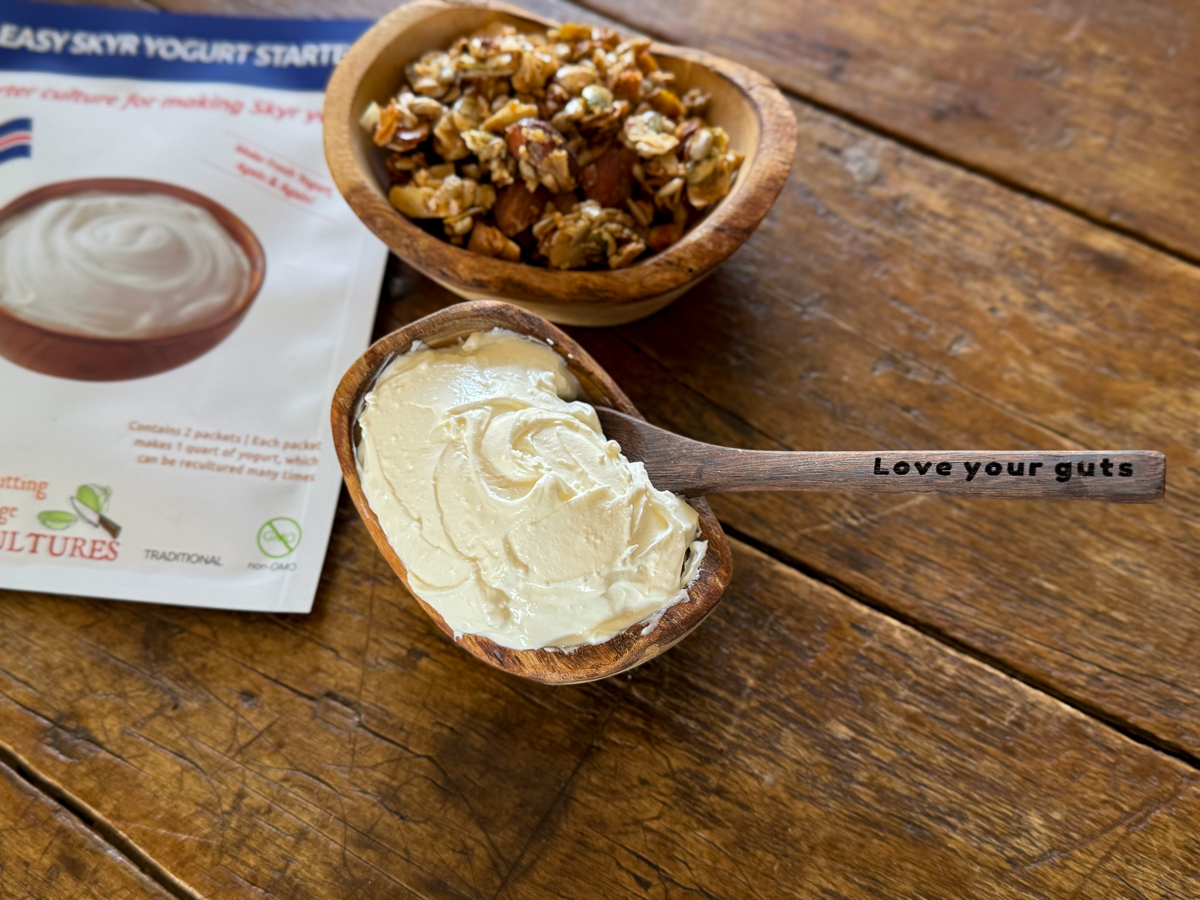
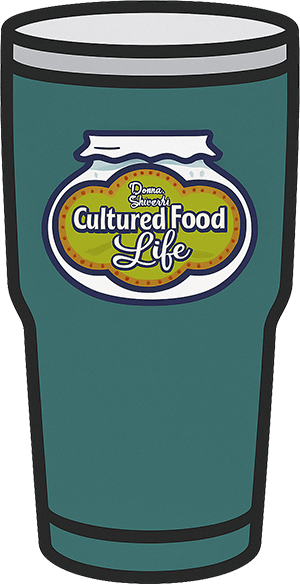 Insulated Mug Instructions
Insulated Mug Instructions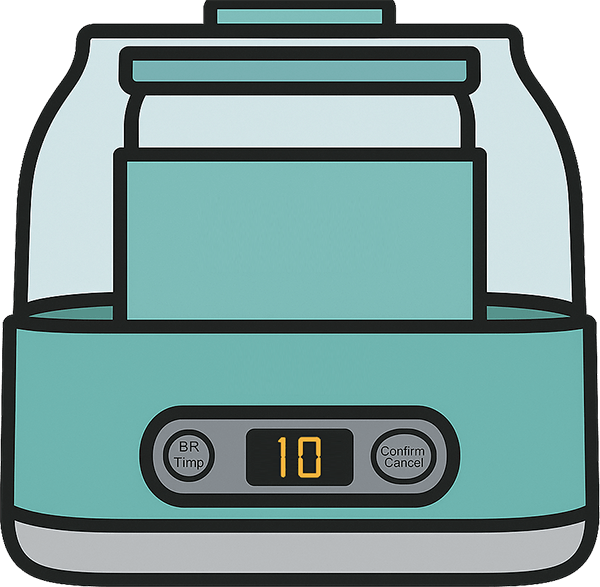 Yogurt Maker Instructions
Yogurt Maker Instructions
